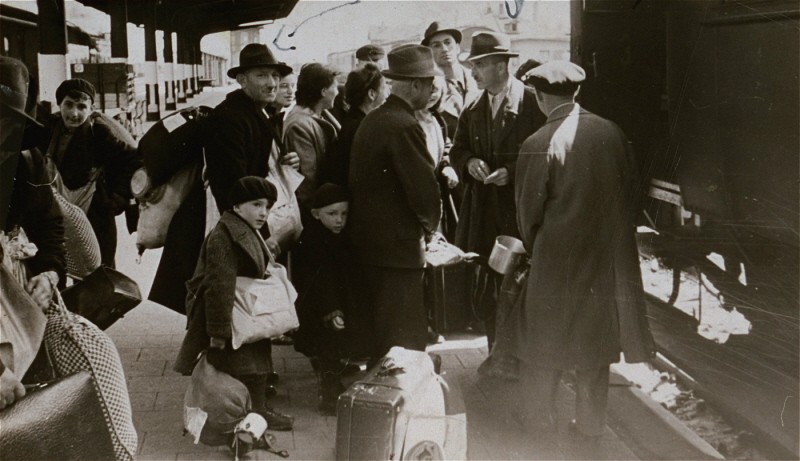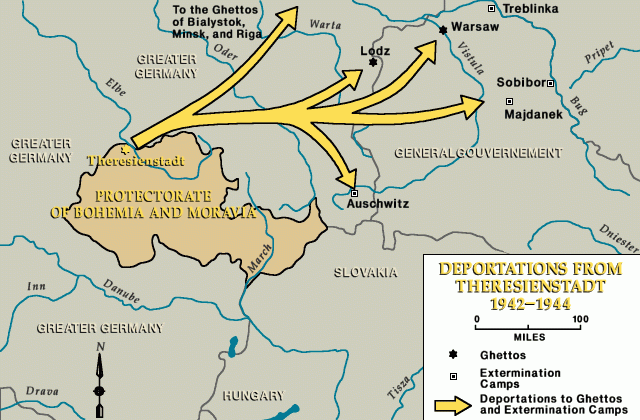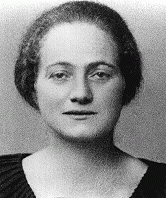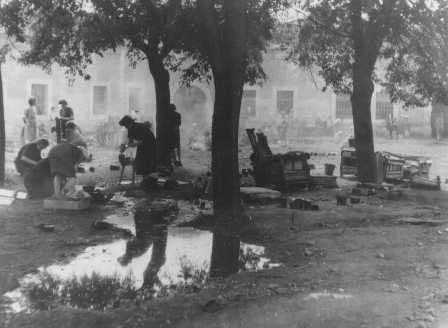
Theresienstadt: Concentration/Transit Camp for German and Austrian Jews
Theresienstadt was a concentration camp and a transit camp en route to the killing centers in the east. At peak capacity, in September 1942, Theresienstadt held approximately 60,000 prisoners crammed into an area with streets barely over 700 yards long. Supplies of food and medicine were rarely sufficient for survival over long periods of time, particularly for the elderly and the frail.
The SS and police began deporting Czech Jews from Theresienstadt on January 9, 1942. Over the next ten months, 32 transports carried 42,005 people, most of them Protectorate Jews, from Theresienstadt to locations in the east. The destinations were:
- Riga, Latvia (January 12, January 19, and August 20, 1942)
- Minsk and Baranoviche (today: Baranavichy), Belorussia (July 17, July 31, August 4, August 25, September 8, and September 22)
- Raasiku, Estonia (September 5, 1942)
- the camp-ghettos in Izbica and Piaski in the Lublin District of the Generalgouvernement (March 11, March 17, April 1, April 23)
- other locations in Lublin District (Rejowiec, April 18, 1942; Zamosc, April 28 and April 30, 1942; Siedliszcze, May 9, 1942; Lublin, May 17, 1942; and Ujasdow, May 25, 1942)
- the Warsaw ghetto (April 25, 1942)
- and directly to the Treblinka killing center (September 18, September 21, September 23, September 26, September 29, October 5, October 8, October 15, October 19, and October 22, 1942)
Other than a small minority from some of the transports selected out for forced labor, the Germans shot those Jews deported to Latvia, Estonia, and Belorussia at killing sites and transported those Jews arriving in the Generalgouvernement to the killing centers Belzec, Sobibor, and Treblinka. Of the 2,003 Czech Jews arriving in Riga in January, only 128 survived the war. The SS and police shot most of the rest shortly after their arrival. Likewise, the overwhelming majority of the 12,003 Czech Jews deported to the Generalgouvernement between March and May 1943 died either in the gas chambers of the Operation Reinhard killing centers or at the labor sites in the Lublin/Majdanek concentration camp and other forced-labor camps for Jews in Lublin District.

Even after the arrival of the first German Jews, two transports of Czech Jews, each containing 1,000 persons left Theresienstadt for the Generalgouvernement on June 12 and 13, 1942. In the absence of documentary evidence relating to the fate of most of them—85 men selected from the June 13 transport are known to have died in Lublin/Majdanek—the likely destination of these two transports was Sobibor. None of the persons on these two transports is known to have survived.
The 18 transports to the Baltic States, Belorussia, and Treblinka between July 14, 1942 and October 22, 1942, involved 25,004 persons. They included for the first time Jews from Germany and Austria. Only 55 persons are known to have survived (45 of these survived the shootings at Raasiku).
Of the 42,005 Jews deported from Theresienstadt to the East between January 9, 1942, and October 22, 1942, only 224 are known to have survived (about one half of one per cent), more than half of them among those deported to Riga in January.

By late summer 1942, the SS and police had completed the deportation of most of the Czech Jews, and had established the increasing importance of the Auschwitz concentration camp complex, including Auschwitz II (Auschwitz-Birkenau), for the annihilation of the European Jews and for exploitation of the labor capacity of a minority picked temporarily to survive. Henceforth, the SS deported surviving German, Austrian, and Czech Jews to Auschwitz, where the chances of survival, though minimal, remained slightly better than in the Baltic States, Belorussia, and the Generalgouvernement.
On October 26, 1942, less than 48 hours after the arrival of the last transport from Theresienstadt to Treblinka, the SS dispatched the first transport to Auschwitz, carrying 1,866 persons. Upon arrival, SS officials selected 247 people, mostly men, to be registered as prisoners, and killed the remaining 1,619 people in the gas chambers.
Between October 26, 1942 and October 28, 1944, the Germans deported 46,750 Jews from Theresienstadt to Auschwitz in 27 transports. The first twelve transports, involving between 20,168 and 20,204 persons, arrived at Auschwitz between October 26, 1942 and March 20, 1944. In their effort to “clean-up” Theresienstadt for the benefit of Red Cross visitors expected in June 1944, the SS deported 7,503 ghetto inhabitants to Auschwitz in three transports (May 15, May 16, and May 18, 1944). The Red Cross visit in June instituted a lull in the deportations between mid-May and late September 1944: the SS sent 10 Jews to Auschwitz on July 2, 1944—camp authorities registered all of them as prisoners.
The quiet period ended on September 28. Between September 28, 1944, and October 28, 1944, the SS transported 18,402 Jews from Theresienstadt to Auschwitz in 11 transports. Only 1,574 survived the war. By late October, 11,077 “residents” remained in Theresienstadt. Over the following six months, until April 15, 1945, 3,432 German and Austrian Jews were deported to Theresienstadt.
Despite all the efforts of the Council of Jewish Elders and the camp-ghetto inhabitants to make the best of an atrocious situation, living conditions in the ghetto with respect to food supply, medicine, maintenance of residential structures, provision of basic services, and overpopulation in a limited space caused a death rate in the camp-ghetto comparable to that in concentration camps like Dachau and Buchenwald. In 1942, the death rate within the ghetto accelerated so dramatically that the Germans built—to the south of the ghetto—a crematorium capable of handling almost 200 bodies a day.
Between November 24, 1941 and April 20, 1945, 141,184 persons lived in the camp-ghetto at one time or another. Of the approximately 88,323 whom the Germans deported, perhaps 3,500 survived the war. 33,521 "residents" of Theresienstadt died in the ghetto of disease, starvation, exposure, or in the course of performing forced labor without adequate clothing, nourishment or equipment. To the death toll must be added a further 430 persons who died after the International Red Cross took responsibility for providing food for the prisoners in early May 1945. 1,137 more died in the month after liberation.
The total number of deaths at Theresienstadt was 35,088. Despite the fact that the number of elderly persons passing through Theresienstadt raised the percentage of prisoners vulnerable to the conditions imposed by the SS, this number of deaths, particularly in consideration of the survival rate from the deportations, reflects a reality of daily life that exposed the SS-created fiction as the brutal and cynical falsehood that it was.

Critical Thinking Questions
- What was the role of Theresienstadt in the Nazi strategy of deception? How was it different from the majority of concentration camps and ghettos?
- Did other camps have multiple purposes? If so, what were they?
- Euphemisms, mild or indirect words or expressions substituted for ones considered to be too harsh or blunt, can hide dangerous or illegal behavior. What expressions did the Nazis use to disguise their intentions or policies?

